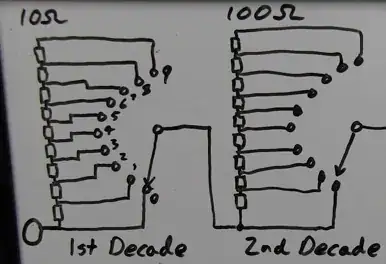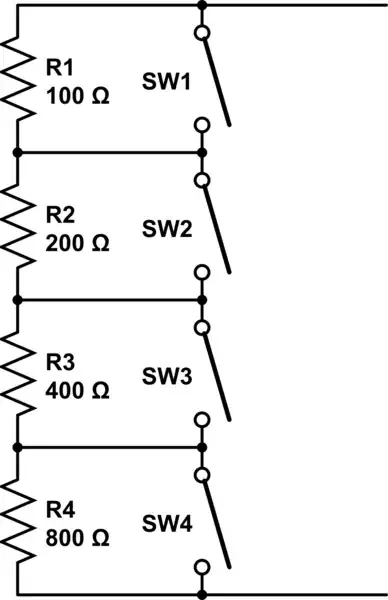I'm looking at building my own decade resistance box, but the typical rotary switches are... quite expensive. They seem to be the most expensive part of the entire project. Whether I choose a real rotary switch or a DIP switch or even a thumbwheel switch, the standard decade resistance box uses an SP10T switch that is either expensive or limited in selection.
I've seen a lot more switches that use a BCD output code, or a BCD complement code (example: page six of this datasheet, specifically switch functions 1 and 2. But I'm having a tough time wrapping my head around the connections. In an SP10T switch, you connect the 0 terminal to the "input", and the common terminal is the "output" (or vice versa), as seen here:
 (source: EEVblog #212)
(source: EEVblog #212)
But a BCD switch makes multiple connections depending on the desired code. For example, if I set the switch to 3, then the common terminal will be shorted to positions 1 and 2. In a BCD-complement switch, if I set the switch to 3, then the common terminal is shorted to positions 4 and 8. Either way, I can't come up with an arrangement of resistors that would yield a resistance of 3ohms (or 30, or 300, etc).
This is the switch function diagram for the switches I have in mind, which might be a clearer explanation of the behavior I'm describing:

Sorry if this question is kind of confusing, I'm having a hard time explaining it myself! To summarize, does anyone have a connection diagram for a decade resistance box using BCD switches?
